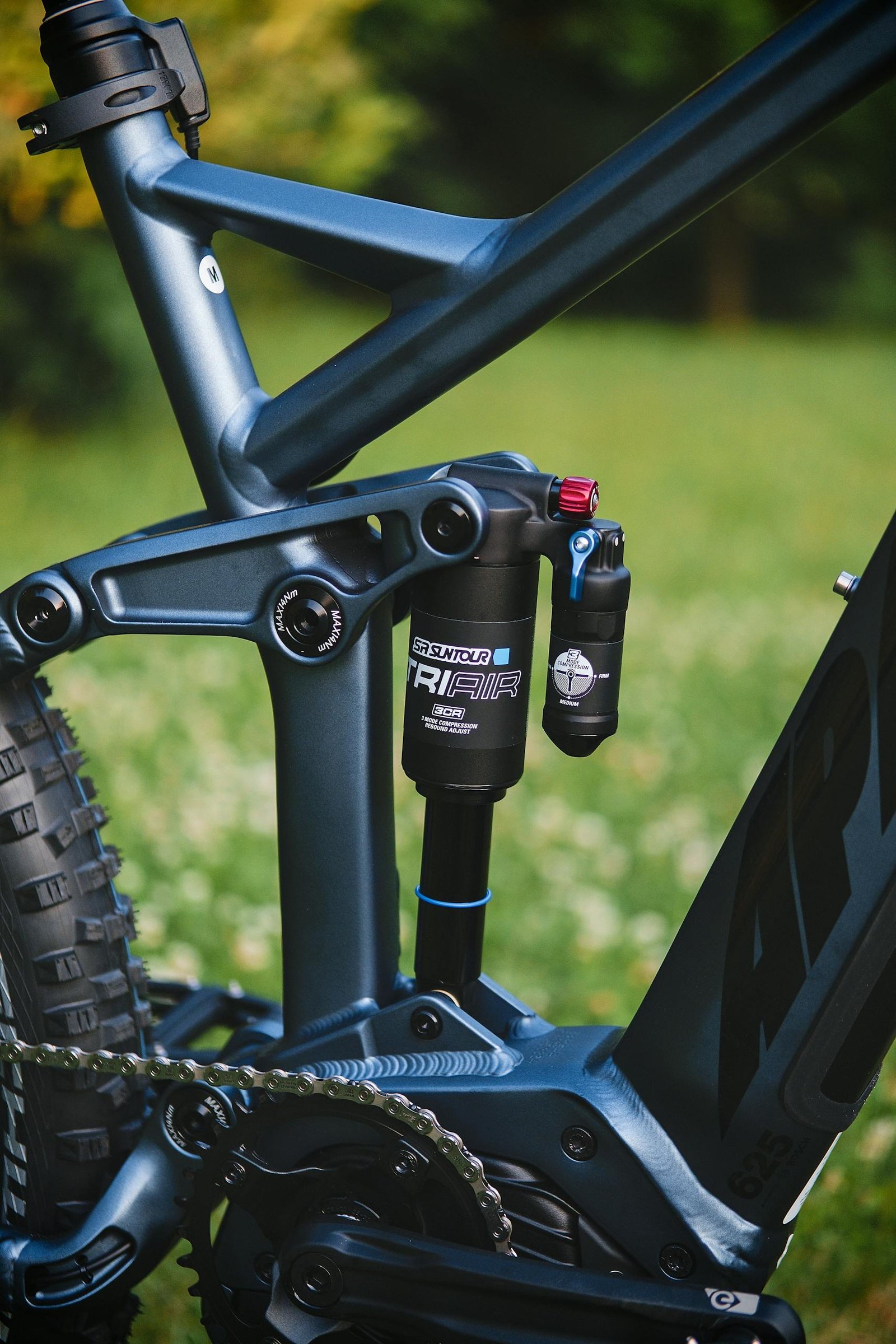Best Mountain Bike Frame Materials in 2024
Knowing a little about the Best Mountain Bike Frame Materials in 2024 can go along way. Did you know that the material of your mountain bike frame can impact its lifespan by up to 10-15 years? I’ve been riding mountain bikes for over decades, and I’m constantly amazed at how frame materials have evolved! Whether you’re hitting the trails or a smooth singletrack, choosing the right frame material is crucial for your riding style and budget. In this comprehensive guide, we’ll break down each material’s strengths, weaknesses, and best use cases to help you make an informed decision.
Aluminum Alloy Frames: The Popular All-Rounder
I’ve spent over 15 years working with mountain bike frames, and let me tell you – aluminum alloys have come a long way. Back when I first started working on them. I was pretty skeptical about aluminum frames. I mean, steel was real, right? But after seeing dozens of different bikes, I’ve developed a deep appreciation for these versatile frames.
The Big Players: 6061 vs 7005 Aluminum
Let’s talk about the two heavy hitters in the MTB world. 6061-T6 and 7005 aluminum are what you’ll find on most bikes, and there’s a good reason for that. 6061 is like that reliable friend who’s always got your back – it’s easier to work with, more forgiving during the welding process, and tends to be a bit less expensive. I’ve seen some 6061 frames take absolutely brutal hits and live to ride another day.
7005, on the other hand, is the overachiever of the bunch. It’s about 10% stronger than 6061. The frames need really precise heat treating, which is why you typically see it on higher-end bikes.
Weight and Strength: The Sweet Spot
Here’s what blows my mind about modern aluminum frames. A typical aluminum frame weighs between 1,500-1,900 grams, which is pretty impressive when you consider the abuse these things take.

Manufacturing and Cost (Why It Won’t Break the Bank)
The manufacturing process is fascinating – and it’s a big reason why aluminum frames are so cost-effective. The tubes are butted (meaning they’re thicker at the ends and thinner in the middle) which saves weight while maintaining strength where it’s needed most. It’s amazing how automated the process has become. That’s why you can get a solid aluminum frame for around $500-800, while comparable carbon frames often start at $1,500.
Durability: The Real-World Test
Want to know something wild? In all my years working with bikes, I’ve seen way more broken carbon frames than aluminum ones. Aluminum gives you clear warning signs before failure – dents, creaks, or visible damage. Unlike carbon, which can have hidden damage, aluminum is pretty straightforward about letting you know when something’s wrong.
The Ride Feel and Vibration Story
Now, let’s address the elephant in the room – ride quality. People love to say aluminum is harsh, but that’s outdated thinking. Modern aluminum frames use sophisticated tube shapes and varying wall thicknesses to tune the ride. Plus, with today’s wider tires and better suspension, that old “aluminum is harsh” story just doesn’t hold up anymore. My personal trail bike is aluminum, and it rides smooth as butter.
For maintenance, just keep an eye out for any unusual dents or cracks, especially around the welds. A well-maintained aluminum frame can easily last 5-10 years of hard riding. Just remember to regularly check those welds and bottom bracket area – that’s where I typically see issues develop first. This is still considered a top contender for the best mountain bike frame material.
These frames aren’t just popular because they’re affordable – they’re genuinely great performers that can take a beating. And for most riders, that’s exactly what you need.
Carbon Fiber Frames: The Premium Performance Choice
I’ve witnessed the incredible evolution of carbon fiber frames. Initially, I was one of those skeptics who thought carbon was just a fancy marketing gimmick. But honestly, after reviewing extensively these frames and seeing their real-world performance, I’ve completely changed my tune.
Modern Carbon Technology: A Game-Changing Evolution
First off, let’s dive into what makes modern carbon frames so special. Today’s carbon fiber technology is leagues ahead of where it was even five years ago. The key advancement lies in how manufacturers now use different types of carbon in specific frame areas. For instance, high-modulus carbon is placed in areas needing maximum stiffness, while more flexible carbon sheets are used in zones requiring less.

The Weight Game: Numbers That Actually Matter
Speaking of comparisons, let’s talk about weight because this is where things get really interesting. A high-quality carbon frame typically weighs between 900-1,200 grams, which is significantly lighter than aluminum alternatives. What’s even more impressive is the stiffness-to-weight ratio.
Durability: Separating Facts from Fiction
Now, here’s where I need to bust some myths about carbon fiber durability. Modern carbon frames are incredibly tough. While it’s true that they can crack under impact (rather than dent like aluminum), they’re designed to withstand tremendous forces.
Manufacturing: Where Quality Really Matters
Moving on to the manufacturing process, this is crucial to understand because it directly affects frame quality. High-end carbon frames are laid up by hand, with each layer of carbon precisely positioned for optimal strength. The difference between a $2,000 and $5,000 carbon frame often lies in this layup process and quality control.
The Price Tag: Understanding What You’re Paying For
Let’s be honest about the cost factor. Quality carbon frames aren’t cheap, typically ranging from $2,000 to $6,000 or more. However, the performance benefits can be worth it for the right rider. From my experience, riders who prioritize speed, efficiency, and precise handling tend to get the most value from carbon frames.
That said, it’s important to note that you don’t always need to spring for the most expensive option – mid-range carbon frames often offer the best balance of performance and value.
Maintenance: The Real Story
Finally, let me share some straight talk about maintenance. Despite what you might have heard, carbon frames don’t require significantly more maintenance than other materials. However, they do need regular inspection, particularly after crashes.
The key is catching any potential issues early – which is why I recommend having a professional inspection at least once a year. If you’re spending that much money you might as well protect your investment.
Through my years of experience, I’ve learned that while carbon fiber frames aren’t magic, they do offer genuine performance advantages for riders who can justify the investment. The technology continues to improve, making these frames more durable and reliable than ever before. Just remember – like any premium product, they require proper care and attention to deliver the best mountain bike frame materials full potential.
Steel Frames: The Classic Reliable Option
I can confidently say that steel frames hold a special place in my heart. You might be thinking, “Isn’t steel old school?” Well, let me tell you why modern steel frames are anything but outdated.
Modern Steel: Not Your Grandpa’s Bike Frame
First and foremost, today’s steel frames are incredibly sophisticated. The most common alloys you’ll find are 4130 chromoly and Reynolds 853, which are leagues ahead of the heavy steel frames from back in the day. These modern steel tubes are heat-treated and butted (meaning they’re thinner in the middle and thicker at the ends), resulting in frames that are both strong and surprisingly light.
That Famous Steel Ride Feel
Moving on to what really sets steel apart – Steel has a natural spring to it that makes it incredibly comfortable on long rides.
Durability and Repairs: The Long Game
Speaking of longevity, this is where steel really shines. Unlike carbon or aluminum frames, steel can actually be repaired by a skilled frame builder if damage occurs. Also, steel doesn’t fatigue in the same way as aluminum, which means these frames can literally last decades with proper care.

Weight: The Truth Behind the Numbers
Now, let’s address the elephant in the room – weight. Yes, steel frames are typically heavier than their carbon or aluminum counterparts, but the difference might surprise you. A well-designed steel frame usually weighs between 1,800-2,200 grams, which is only about 400-600 grams more than a comparable aluminum frame. What’s really interesting is how that weight is distributed throughout the frame. The density of steel allows for thinner tube walls, which actually contributes to that amazing ride quality I mentioned earlier.
Cost Considerations Over Time
Moving on to the financial aspect, steel frames present an interesting value proposition. While they’re not the cheapest option upfront (quality steel frames typically range from $800-2,000), their longevity makes them incredibly cost-effective over time. When you factor in the potential for repairs and the incredible durability, the cost per year of ownership often works out lower than other materials.
Who Should Consider Steel?
Finally, let’s talk about who might benefit most from a steel frame. Through my experience, steel frames excel in several specific situations. They’re perfect for bikepacking and touring due to their durability and comfort. Trail riders who prioritize ride quality over gram-counting often fall in love with steel frames. Furthermore, they’re ideal for riders who appreciate longevity and sustainability in their gear choices.
At the end of the day, maintenance is straightforward with steel frames. The only real consideration is preventing rust, which is easily managed with proper frame treatment and regular inspection. I always recommend checking the frame periodically for any signs of rust, particularly around the bottom bracket and seat tube areas where moisture tends to accumulate.
From my years of experience, I can tell you that steel frames aren’t just hanging around because of nostalgia – they’re still here because they offer genuine advantages that modern materials can’t quite replicate. While they might not be the lightest or the most cutting-edge option, they provide a unique combination of durability, repairability, and ride quality that continues to win over riders who give them a chance.
Titanium Frames: The Ultimate Premium Material
Through my years of working with bikes, I’ve developed a deep appreciation for titanium frames. Initially, I thought they were just expensive toys for dentists (sorry, dentists!).
The Magic of Titanium Properties
First off, let’s talk about what makes titanium so special. The material we use in bike frames, typically 3Al-2.5V or 6Al-4V alloys, has this incredible combination of properties that almost seems too good to be true.
Durability That Defies Time
Moving on to durability, this is where titanium truly shines. Unlike other materials, titanium doesn’t fatigue in the same way, and it’s practically immune to corrosion.
The Weight Question: Reality vs. Perception
Now, let’s address the weight factor because there are some misconceptions here. A well-designed titanium frame typically weighs between 1,400-1,700 grams, which positions it right between high-end aluminum and carbon frames. However, what’s particularly interesting is how this weight translates to real-world performance.

Manufacturing: Why These Frames Cost So Much
Speaking of building bikes, the manufacturing process for titanium frames is fascinatingly complex. The material requires specialized welding in an argon-rich environment to prevent contamination, and the tools needed to work with titanium must be dedicated solely to this material. Each weld must be perfect, as there’s no room for error when working with such expensive material.
The Legendary Ride Quality
When it comes to ride quality, titanium offers something truly unique. It’s like the frame knows exactly when to be firm and when to flex. On long rides, this translates to noticeably less fatigue, which I’ve heard confirmed by numerous riders who’ve switched to titanium.
The Long-Term Investment Perspective
Finally, let’s talk about value because this is crucial for anyone considering a titanium frame. Yes, they’re expensive – typically ranging from $2,500 to $5,000 for just the frame. However, when you consider the lifetime durability and performance, the cost becomes more reasonable.
Maintenance-wise, titanium is remarkably straightforward. Unlike steel, you don’t have to worry about rust. Unlike carbon, you don’t need to stress about hidden damage. The only real maintenance I recommend is occasional cleaning and inspection of the welds, which is more for peace of mind than necessity.
Through years of researching the best mountain bike frame materials, I’ve come to see titanium as the pinnacle of bike frame engineering. While it might not be the absolute lightest or the stiffest option available, it offers an unmatched combination of durability, ride quality, and long-term value. For riders who can make the initial investment, a titanium frame often proves to be the most rewarding choice in the long run – not just in terms of performance, but also in the pure joy of owning something that’s built to last a lifetime.
Comparing Frame Materials: Making Your Choice
After spending countless hours maintaining bikes made from every material imaginable, I’ve learned that choosing the right frame material isn’t as straightforward as many people think. Let me break down what I’ve discovered through years of hands-on experience.
Mountain Bike Frame Materials FAQ
“Which frame material is the most durable for mountain biking?”
I’ve found that titanium mountain bike frames offer unmatched durability. Chromoly steel frames (like Reynolds 853 and 4130) are also incredibly resilient, often lasting decades with sufficient maintenance. While aluminum alloy frames (6061-T6 and 7005) typically last 5-7 years under heavy trail use, modern carbon fiber composites can match titanium’s longevity if protected from impact damage.
“What’s the best mountain bike frame material for value-conscious trail riders?”
For most trail riders, aluminum alloy frames offer the best performance-to-price ratio. Modern butted aluminum tubing provides excellent stiffness-to-weight characteristics at a fraction of the cost of exotic materials. A quality aluminum hardtail or full-suspension frame delivers outstanding trail performance for $500-800, compared to $2,000+ for carbon fiber alternatives.
“Which mountain bike frame material needs the least maintenance?”
Of all the frame materials, titanium and carbon fiber require minimal maintenance for trail riding. Titanium alloy frames only need basic cleaning, while carbon fiber frames need to be periodically inspected for impact damage. Aluminum MTB frames demand occasional checks for fatigue around welds and high-stress areas. Chromoly steel frames require the most attention, needing regular rust prevention, especially in wet riding conditions or after paint damage from rock strikes.
“Are carbon fiber mountain bike frames really as fragile as people say?”
Modern carbon fiber MTB frames are far more durable than their reputation suggests. Today’s carbon composites and manufacturing techniques create frames that can withstand massive forces on technical trails. While they don’t dent like metal frames, high-modulus carbon fiber actually has superior impact resistance when engineered correctly.
“Are titanium mountain bike frames worth their premium price?”
When considering the lifetime value prop, titanium MTB frames can justify their $2,500-5,000 price tag. The material’s properties have fatigue resistance, corrosion immunity. It’s a frame that typically outlasts multiple bikes made from other materials. Additionally, titanium’s unique combination of strength and stiffness provides exceptional performance on singletracks.
“How much do frame material weights affect actual trail performance?”
The real-world weight differences between modern MTB frame materials have less impact than many riders expect. While a carbon fiber frame might save 500-700g compared to aluminum, that’s minimal on a complete trail bike. What matters more is the frame material’s ride characteristics – stiffness, compliance, and vibration handling.
Performance Face-Off: How They Really Compare
First off, let’s cut through the marketing hype and talk real performance. In my experience, each material has its sweet spot. Carbon fiber truly excels in racing scenarios. However, interestingly enough, many couldn’t tell the difference between a high-end aluminum frame and a mid-range carbon one.
Moving on to metals, aluminum has come so far in recent years that it’s honestly impressive. Modern aluminum frames offer a ride quality that’s surprisingly close to carbon, especially with proper tire setup. Steel and titanium, meanwhile, share that characteristic “springy” feel that many riders love.
The Real Cost Equation
Now, let’s talk money because this is where things get really interesting. While aluminum frames might start around $500, and carbon can soar past $5,000, the true cost story isn’t just about the initial price tag. I’ve noticed some patterns worth sharing:
- Aluminum: Best bang for buck, typically lasting 5-7 years of hard use
- Steel: Moderate initial cost but potentially infinite lifespan with proper care
- Carbon: High upfront cost, but surprisingly durable when well-maintained
- Titanium: Highest initial investment but practically indestructible
Durability and Maintenance: The Long Game
Speaking of durability, let me share what I’ve seen in terms of long-term reliability. Each material fails differently, which is crucial to understand:
- Aluminum tends to fatigue over time, but usually gives warning signs
- Steel can rust if neglected, but is easily repairable
- Carbon can hide damage, requiring careful inspection
- Titanium practically laughs at abuse, showing minimal wear over decades

Environmental Impact: A Growing Consideration
Moving on to environmental concerns, this is something I’ve been paying more attention to lately. Traditional materials like steel and titanium have excellent recyclability. Carbon fiber, however, remains challenging to recycle effectively. Aluminum strikes a nice balance, requiring significant energy to produce but being highly recyclable.
Real-World Weight Differences
Let’s tackle the weight question head-on with some real numbers:
- Carbon frames: 900-1,200g
- Titanium frames: 1,400-1,700g
- Aluminum frames: 1,500-1,900g
- Steel frames: 1,800-2,200g
However, here’s what’s fascinating – these differences often disappear once you add components.
Matching Riders to Materials
Finally, here’s how I would typically recommend frames for different riders:
For Racing/Competition:
- Carbon for its unbeatable power transfer and light weight
- High-end aluminum for budget-conscious racers
For Trail/All-Mountain:
- Aluminum for its balance of performance and cost
- Steel for those prioritizing ride quality and repairability
For Long-Distance/Bikepacking:
- Titanium if budget allows
- Steel for its reliability and comfort
- Carbon if weight savings is a priority
Through all my years of riding, I’ve learned that the “best” material really depends on individual needs, riding style, and budget. The good news is that modern manufacturing has made every material so good that it’s hard to make a wrong choice – it’s more about finding the right match for your specific situation and budget.
Remember, the key is being honest about your riding style and requirements. I’ve seen too many riders choose based on what’s trendy rather than what suits their needs. And here’s a pro tip, don’t get too caught up in the material debate – factors like performance and component choice often make a bigger difference in how a bike actually rides. Request a test ride when ever possible.
Wrapping Up
Choosing the best mountain bike frame material doesn’t have to be overwhelming! Consider your riding style, budget, and maintenance preferences. While aluminum offers excellent value for most riders, carbon fiber could be worth the investment if you’re seeking top performance. Remember – the best frame material is the one that matches your specific needs and helps you enjoy every trail adventure to the fullest. Your perfect frame material awaits!
Engage, Endure and Enjoy!







